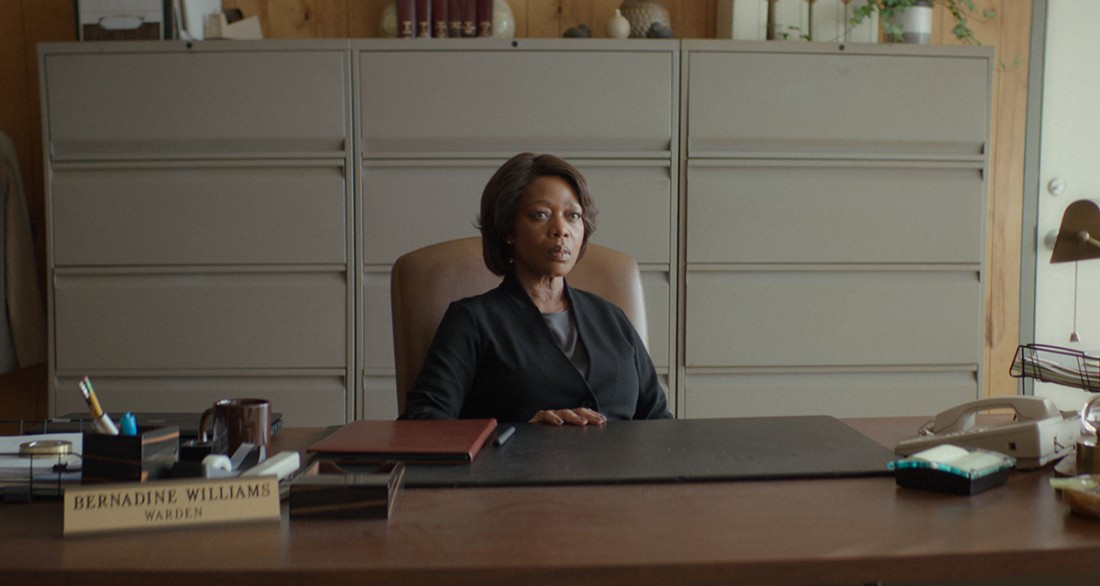CRITIPEG: Clemency
★★★★★, Plays at Cinematheque until March 18
Clemency is the second feature from writer/ director Chinonye Chukwu. The film, which won the Grand Jury Prize at the Sundance Film Festival, follows American prison warden Bernadine Williams (Alfre Woodard). Woodard, who has nabbed six nominations for best actress, gives a deeply complex performance as a warden who must facilitate the execution of death row inmate Anthony Woods (Aldis Hodge).
Chukwu establishes the stakes early on with the botched execution of a Latinx inmate. When anesthesia fails to protect the man from the horrible pain of lethal injection, Bernadine and the audience are forced to reckon with the horror of watching him die in agony. Chukwu stages the difficult scene with a theatrical sense of symmetry, and each of the prison staffers play their part in this dance of death. The subtle sound design heightens the sense of horror without sensationalizing it.
The whole film is visually striking, as shots tend to obscure the actors rather than glamourize them, often choosing to partially hide them by doorways, furniture or by having characters face away from the camera. The architectural elements of the prison are used to visually box in the actors. The square lines of walls or filing cabinets appear to trap characters within this violent prison system.
This is further complicated as Bernadine is played by Woodard, a Black woman. As the warden, Bernadine is complicit in the prison industrial complex, which is particularly antagonistic toward Black people. Her story is foregrounded within the wider context of protest and political action for the possibly innocent Woods.
Her race and gender are never explicitly commented on but are subtly foregrounded by the fact that she is often the only woman, and certainly the only racialized woman working for the prison. She is the warden, and she is definitely in charge. Interestingly, family members of the men slated for execution grasp at her for physical sup- port during moments of desperation and grief, but she refuses them the emotional labour expected from her as a woman.
The film, overall, is not meant to inspire or shock the audience into understanding the obvious evil of capital punishment, but rather to challenge the audience to reckon with the personal sacrifices of those who work with death row inmates and impress on an audience the sense of absolute powerlessness of the inmates and staff when it comes to executions.
There is no moral answer to spoon-feed the audience. We must decipher the visual story of a warden, who happens to be a Black woman, dwarfed by the structure of a violent system. As an audience, we have to decide what we believe about capital punishment, especially if there is doubt about an inmate’s guilt.
Clemency is a visually impressive film that leaves viewers questioning humanity, but it is up to the audience to decide what those questions are.
Published in Volume 74, Number 21 of The Uniter (March 12, 2020)







